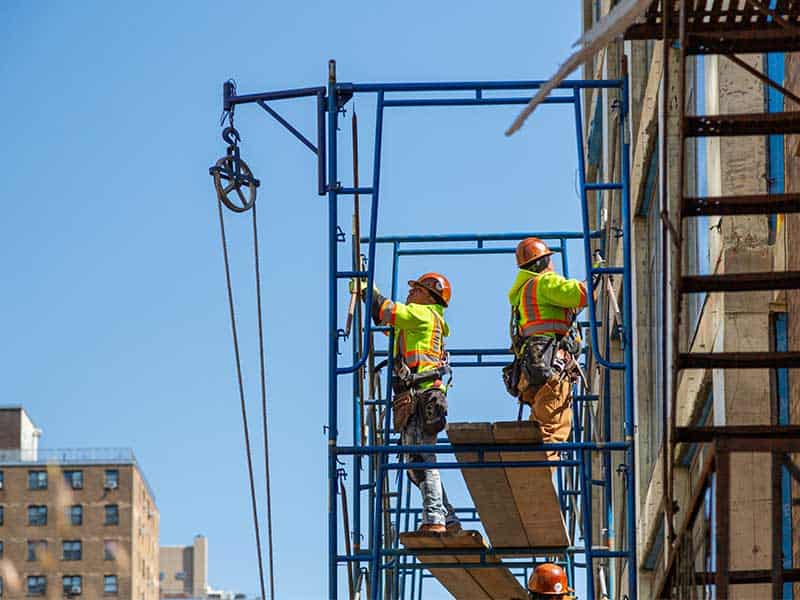
Understanding Local Law 196 in New York City
Pairing a site safety plan with highly trained construction professionals helps prevent accidents, injuries, and even fatalities. Continue reading to learn more about Local Law 196 in New York City and how to avoid penalties for being out of compliance.
What Is Local Law 196?
The state government signed NYC Local Law 196 (NYC LL196) in 2017 to improve the safety of demolition and construction sites around the city. They put local Law 196, OSHA, and other safety regulations in place to minimize the number of injuries at NYC construction sites. The law works through what are essentially layers of required training.
As a quick reminder, let’s go through some of the significant milestones of the legislation. At its base level, NYC LL196 went into effect in early 2018 and mandated that all demolition and construction workers, managers, site safety coordinators, and supervisors receive safety training.
Site Safety Training
Effective March 1, 2021, Local Law 196 mandates workers and site supervisors to earn and carry a Site Safety Training (SST) card. To earn this card, workers are required to attend 10 hours of OSHA training along with 30 hours of additional training, while site supervisors are required to hit 62 hours.
Along with OSHA training, construction workers must complete:
- Eight-hour fall prevention training
- Eight-hour Chapter 33 training
- Four-hour supported scaffold user training
- Two OSHA 30-hour classes
It is important to note that SST cards do expire. Your card remains valid for five years from the day you receive certification. Once your card is within a year of expiring, you must complete refresher training courses.
The safety training requirements courses include a four-hour fall prevention training and a four-hour supported scaffold user training for construction workers. Supervisors must complete the following courses:
- Eight-hour fall prevention training
- Four-hour support scaffold training
- Two-hour tool box talks
- Two-hour pre-task safety meetings
Local Law 196 Exemptions
While construction superintendents, site safety coordinators, and site safety managers must undergo NYC LL196 training, not all employees do. Laborers at job sites requiring only minor alterations or workers performing construction of new one, two, or three-family units also are exempt from NYC LL196. Additional Local Law 196 exemptions include:
- Flag persons
- Delivery persons
- Architects
- Department licensees
- Department-registrants, excluding safety specialists
Explanation of Required Training
With so much Local Law 196 training required, here is a simple breakdown of what workers can expect from your OSHA courses and DOB training.
OSHA 10 – This 10-hour training course is available online and covers topics including fall protection, protective equipment, electrocution risks, and more. It is likely that, by this point, workers in New York City have already completed this course due to compliance requirements with earlier deadlines.
OSHA 30 – This 30-hour course is also available online and covers the topics included in the OSHA 10 training more extensively. Topics include the OSHA Construction Focus Four (major fall, caught-in/-between, struck-by, and electrocution), crane hazards, steel structure hazards, fire hazards, and more. This training may also have already been completed as a part of previous requirements under NYC Local Law 196 and other city or state requirements.
Department of Buildings-Approved Training – Other than the OSHA-approved training classes, Local Law 196 also requires the completion of 100 hours of additional training approved by the NYC Department of Buildings.
Potential Violations
Inspectors with New York City are visiting registered construction and demolition sites to verify workers are correctly following local law 196 safety procedures. Potential violations include incorrect scaffolding safety measures, failure to install and use cranes per required training, inadequate fall protection, and other safety issues.
Construction permit holders must maintain a log and attest that all workers on the site have undergone proper safety training. If that log is not maintained, the permit holder can be fined $2,500 per untrained worker at the site. The site holder, the permit holder, and the employer of the untrained worker face fines of $5,000 per untrained worker. These violations all constitute civil penalties.
Local Law 196 mandates that workers undergo extensive OSHA and DOB-approved training if construction permit holders, site owners, and employers are to avoid extensive fines.
Enforcing Local Law 196 in New York City
Local Law 196 mandates that the Construction Safety Enforcement Unit (CSE) and the Construction Safety Compliance Unit (CSC) conduct inspections and enforce safety compliance at construction and demolition sites throughout the city.
The CSC is tasked with proactive measures, including inspections of active sites and construction plans. This unit will ensure that sites meet compliance requirements, waivers are granted, and all related compliance needs are met.
The CSE, on the other hand, is designed as an emergency response unit. The CSE will conduct emergency inspections and respond to incidents and accidents on a reactive basis. Together, these two units constitute a comprehensive enforcement structure.
Where React Industries Comes In
In our recent blogs on the topics of critical local laws in New York City (LL97, LL87) React has set out to help building owners and property managers in NYC meet changing environmental and safety compliance requirements. If you’re interested in learning more about Local Law 196 updates or any other new regulations in the city, we are happy to help. Contact us today.